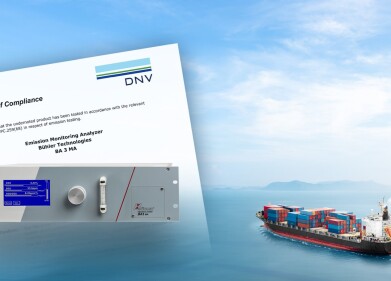Measurement and testing
Microprocessor technology
Aug 09 2018
When we started to design our new Infrared technology, we wanted our sensors to be able not just to perform basic routine operations such as powering the IR source and acquiring signals from the detectors. We wanted our sensors to really think by themselves and to make the life of their users easier. We wanted our sensors to truly be smart.
We wanted our sensor to perform tasks such as directly calculate concentrations, compensate it for environmental factors, speak different communication protocols, provide a standardised, linear output, accelerate response time, perform continuous self-checks and raise warnings and alarms. This is when we decided to incorporate a state-of-the-art microprocessor as the core, the brain, of our new line.
Today, all our Infrared sensors are based on an ARM® Cortex®-M4 core platform providing all the speed, versatility and computing power we need to bring you the most performing gas detection available in a standard 4- or 7-series size.
Despite the reliability, the speed and the versatility the microprocessor brings to our sensors, it also offers industry-leading low power, maintaining consumptions reduced and allowing us to provide a true low power version for our 20-mm series. Traditionally, sensors with this size (20mm diameter), don’t have on-board electronics and signal processing has to be done on an external board.
For the user, the advantages of having a microprocessor-based sensor are many:
- The sensor has a high-level interface, with a standardised, linear output. This eliminates the time and complexity required to deal with low-level signals and calculations
- Communication with the sensor is bidirectional via digital protocols (Modbus and UART). The user can not only get readings, warnings and alarms but also change communication parameters and input updated calibration values
- Fail-safe operation and dependability are enhanced by several self-checks routines and consistency controls continuously performed by the sensor. This allowed N.E.T. IR line to reach SIL2 Safety Integrity Level (read more about SIL)
- Faster response time, with our accelerator algorithm (T90<30s)
- Superior performances at high volumes of concentration, with N.E.T.’s DYNAMIC RANGE TECHNOLOGY
Digital Edition
PIN 26.1 Feb/Mar 2025
March 2025
Analytical Instrumentation - Elemental Analysis for Quality and Process Control at Refineries, for Lubricants and Wear Metals in Engine Oils - Synthetic Lubricants: New Developments - Scaling...
View all digital editions
Events
Apr 14 2025 Moscow, Russia
Apr 15 2025 Moscow, Russia
Apr 22 2025 Hammamet, Tunisia
Apr 22 2025 Kintex, South Korea
Solar & Energy Storage Summit 2025
Apr 23 2025 Denver, CO, USA





.jpg)
















